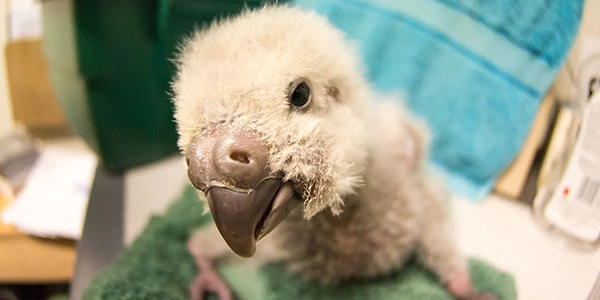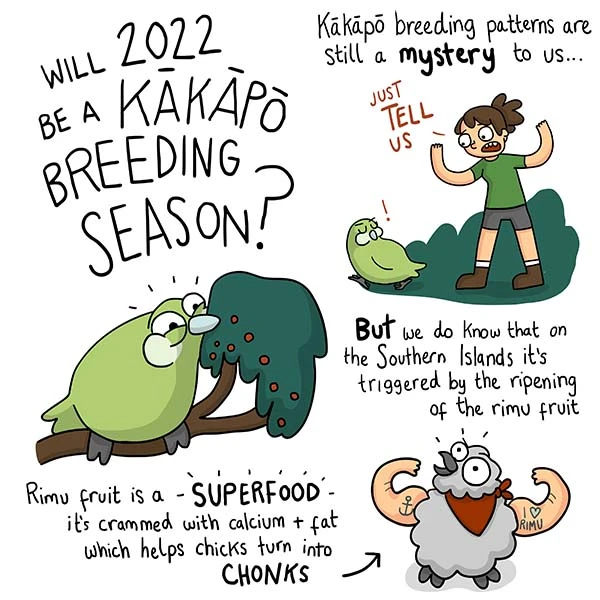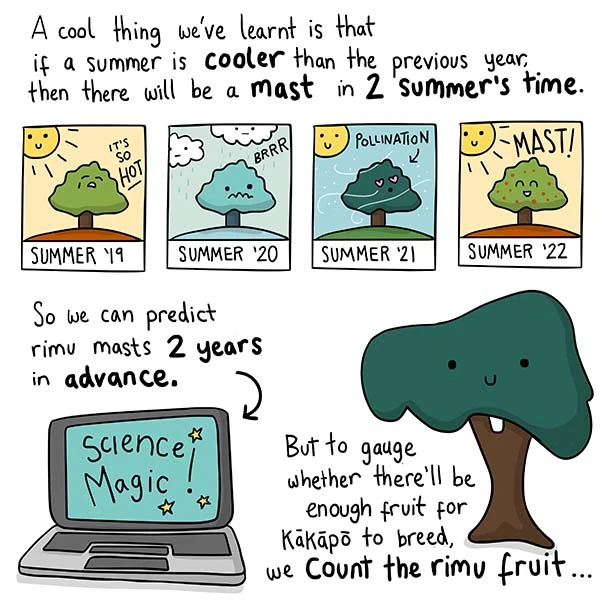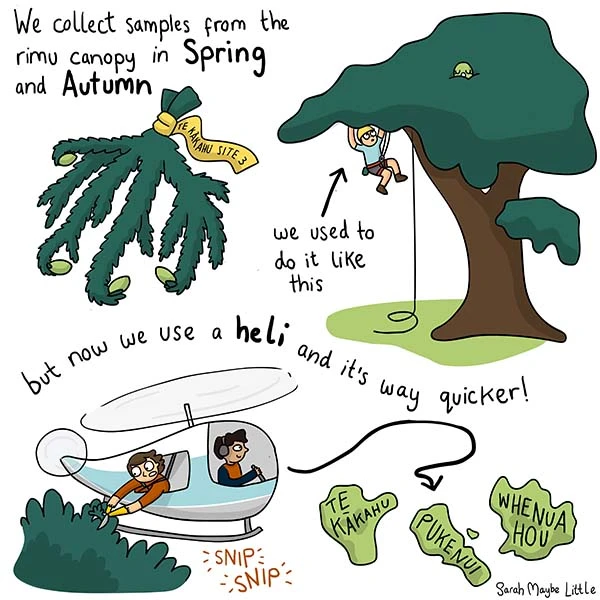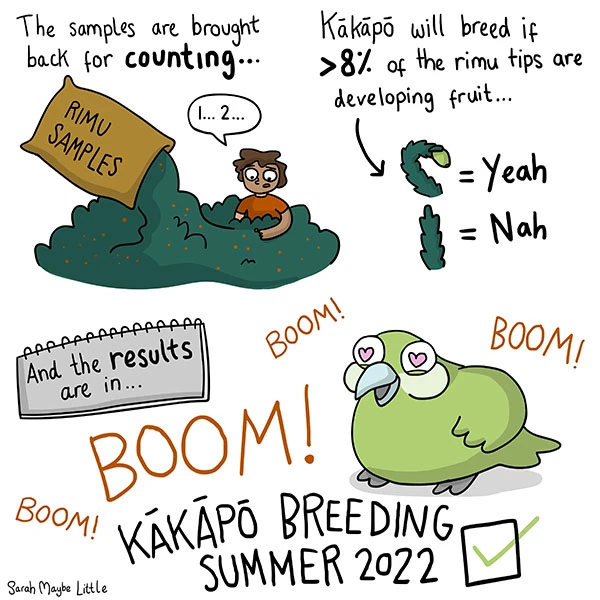Volunteers are already busy out on the islands, hiking the tracks and providing supplementary food for the kākāpō to get them ready for the business time ahead. A huge amount of work has also gone into installing new infrastructure on the islands. More reliable and sustainable power systems have been installed, and an additional room has been added to Anchor Island for incubating eggs. The chick pens have been upgraded and new facilities have also been added to Te Kākahu-o-Tamatea (Chalky Island, down in the southern fiords). This is the first time that Te Kākahu has been used as a base for breeding.
All this work and not an egg in sight might seem a little presumptuous. But nature’s got a way of giving us the heads up and the writings in the rimu trees! Rimu are a masting species – which means that they produce mass amounts of fruit every few years, triggered when the environmental conditions are just right. Each autumn, DOC survey how much fruit is developing on the trees of Anchor and Whenua Hou. The amount of fruit lets the DOC rangers know if we should expect a breeding season the following summer. And this year there’s a good crop.
So now it’s a few quiet weeks of getting the last few jobs done and just waiting for the kākāpō to get down to it. The Kākāpō Recovery team will be making the most of the holidays while they last as they’ll be busy soon enough.
